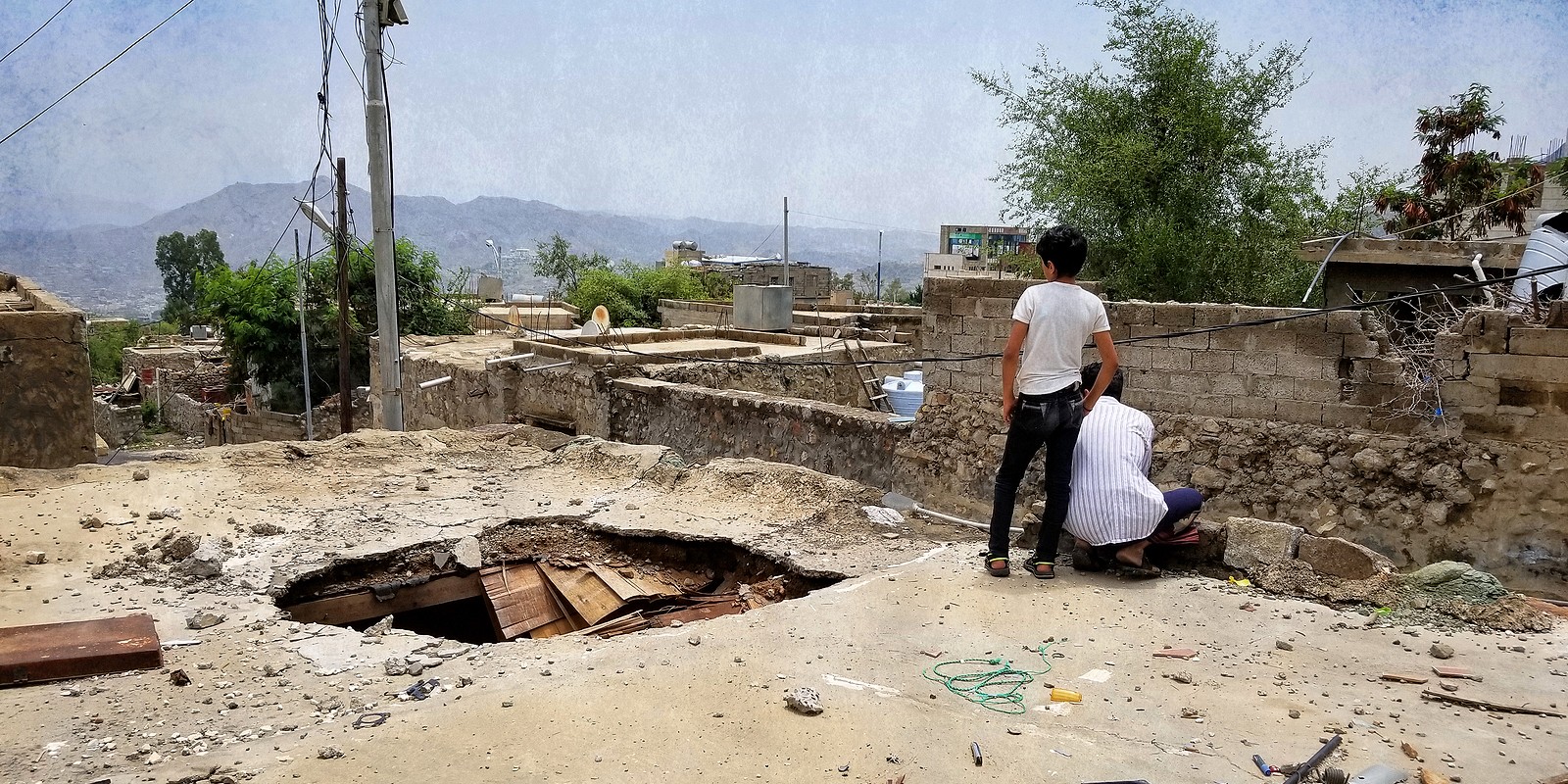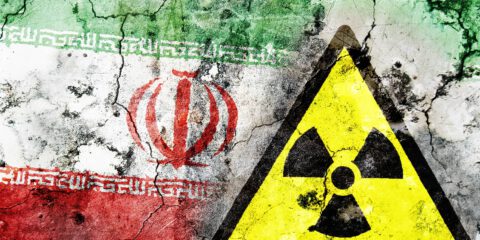The desire for an end to war in Yemen is understandable. Unfortunately, however, the US has leverage over only one of the sides.
Largely ignored by the global media, the fighting in Yemen between the Saudi-supported government of President Abd-Rabbu Mansour Hadi and the Iran-supported Ansar Allah (Houthi) movement, is currently at its most intense since 2018. The Houthis (named after the clan that established and leads the movement) are besieging the city of Marib, located in a gas-rich region of the country. The offensive matters because of the impact it is having on the lives of the people of Yemen, including more than a million displaced persons who live in Marib. But it is also important because of what it indicates regarding broader changes under way in the strategic balance and direction of the Middle East.
The Marib region contains an oil refinery and supplies gas to all of Yemen. It is the last area in Yemen’s North still controlled by the Hadi government. Its loss would thus represent a major strategic blow to the government’s cause. The Houthis, who launched the current phase of their insurgency against the government in 2014, control the Yemeni capital, Sana’a.
The Houthi insurgency followed the toppling of the Western-backed, long-standing regime of president Ali Abdullah Saleh in 2012. Saleh, abandoned by his former Western backers, allied with the Iran-supported Houthis against the new government, and together they took the capital. The Houthis then turned on Saleh and killed him in December 2017. Evidence has since emerged to suggest that this killing was carried out under the direct orders of then IRGC/Quds Force commander Qassem Soleimani.
A Saudi-led and United Arab Emirates-backed intervention to prevent the conquest of the entire country by the Houthis commenced in 2015. Yemen is of strategic importance because at its southern tip, the Bab el-Mandeb (Gate of Tears) Strait controls access between the Gulf of Aden and the Red Sea.
This is a choke point for vessels making their way from the Persian Gulf toward the Suez Canal. A massive volume of natural gas, oil and petroleum-based products on the way to the canal and to European and US markets makes its way through the strait every day. In all, around 9% of all seaborne-traded crude oil and refined petroleum products pass through the strait.
Control of access to this gateway by an Iranian client would represent an enormous strategic gain by Tehran. It would give the Iranians the ability to disrupt or shut down a significant volume of oil traffic to the West at a stroke. The Saudi- and Emirates-supported intervention succeeded in preventing the Houthis from capturing the southern tip of Yemen, and thus acquiring control of the strait. They proved unable, however, to defeat Ansar Allah in its entirety.
In a pattern that has become wearingly familiar in the Middle East over the last decade, the country then became divided into de facto areas of control, and subject to a massive humanitarian crisis. The current offensive on Marib is the most intense episode of fighting since 2018, and is an attempt by the Houthis and their backers to break the long stalemate and regain momentum toward their objective of conquering the entire country.
Pro-government defenses at Sirwah, to the west of Marib City, have collapsed in recent days. As a result, the frontline is now located roughly 20 km. (12 miles) from Marib City, according to Reuters. Hundreds of fighters on both sides have been killed. At present, however, the lines are holding, and the government maintains air superiority, which may prove crucial in preventing the taking of the city by the Houthis in the period ahead.
Marib is home to between one million and 1.5 million refugees. More than 1,500 families have been displaced since the current round of fighting began on February 6. Around 116,000 people left their homes in Yemen in the course of the last year, according to the UN’s International Organization for Migration.
The Houthi offensive commenced on February 6. The timing is crucial to understanding the dynamic. On February 4, US President Joe Biden announced the withdrawal of US support for the Saudi war effort.
“This war has to end,” the president said. “To underscore our commitment, we are ending all American support for offensive operations in the war on Yemen, including relevant arms sales.”
Two days later, the US administration unconditionally revoked the designation of the Houthis as a foreign terrorist designation. The Houthi offensive toward Marib began on the same day. The Houthis also commenced a series of drone attacks on Saudi Arabia.
The desire for an end to war in Yemen is understandable. The humanitarian crisis is acute and urgently in need of attention. Some 250,000 people have lost their lives in a half decade of war.
Unfortunately, however, the US has leverage over only one of the sides. The net result of the removal of support for the Saudi-led side has thus predictably not led to a move toward ending hostilities. Rather, it has resulted in increased aggression by the pro-Iranian side, which now perceives itself as facing an isolated and crumbling opponent rather than an adversary enjoying the backing of a major power.
The sequence of events leading to the Houthi push toward Marib is indicative of a sharp change of perception in Washington, DC, which is producing rapid results in the Middle East. The element of the previous administration that dealt with the Middle East shared the core perception of the region held by key US allies, including Israel, Saudi Arabia and the UAE. According to this conception, a contest for power in the Middle East is under way between rival camps.
This contest is fought partly through proxies. It is a battle for strategic space, and the control of resources and key geo-strategic locations. The camp of which Saudi Arabia and Israel are members is one committed to alliance with the West, and to preserving the strategic architecture in place in the region since the end of the Cold War. It is opposed principally by Iran and its allies and proxies. Arguably, Turkey and its allies constitute an additional anti-status quo power axis.
Reading from this map, support for the Saudi cause in Yemen was obvious and axiomatic. The country is of strategic importance. A pro-Western alliance is fighting a pro-Iranian one. Iran must be prevented from reaching Bab el-Mandeb. No further discussion required.
The Biden administration’s reversal of this straightforward stance with regard to Yemen is the latest evidence that it is reading from a very different map. Together with the administration’s attempt to sideline Saudi Crown Prince Mohammed bin Salman, it suggests that an earlier dynamic has been reestablished. This dynamic, familiar from the Obama period, is one in which allies are reined in and unilateral concessions are made to Tehran, in the hope that this will produce a change in behavior further downstream.
Seen from this perspective, local allies who wish to take a firm stance against Iranian aggression rapidly start to look like a nuisance, a greater impediment to progress than the supposed adversary.
Saudi Arabia appears already to have acquired this distinction with regard to the new administration. The desperate defense of Marib currently underway is the direct result. With regard to the broader administration intent that lies behind all this, the offensive in Yemen, combined with the flurry of rocket attacks against US targets in Iraq by Iran-linked militias, would suggest that as of now, it appears to be producing increased Iranian aggression rather than its intended opposite.
Published in The Jerusalem Post 26.02.2021
JISS Policy Papers are published through the generosity of the Greg Rosshandler Family.
Photo: Bigstock









 - בניית אתרים
- בניית אתרים